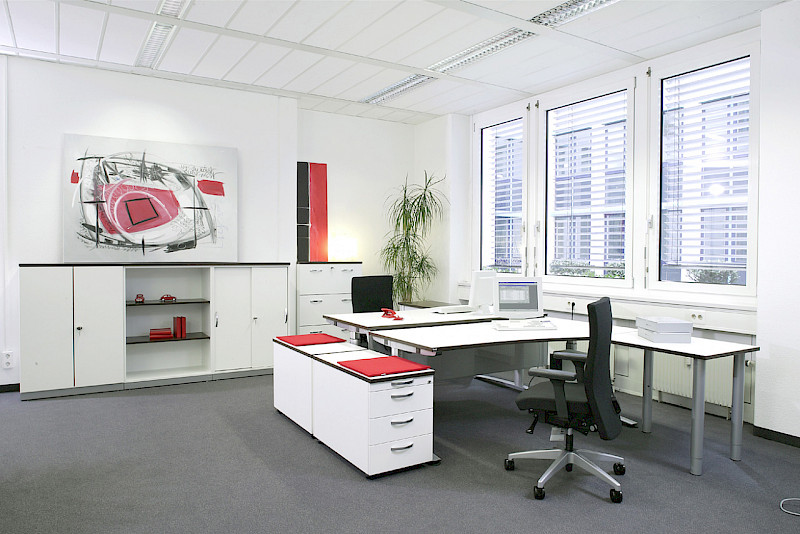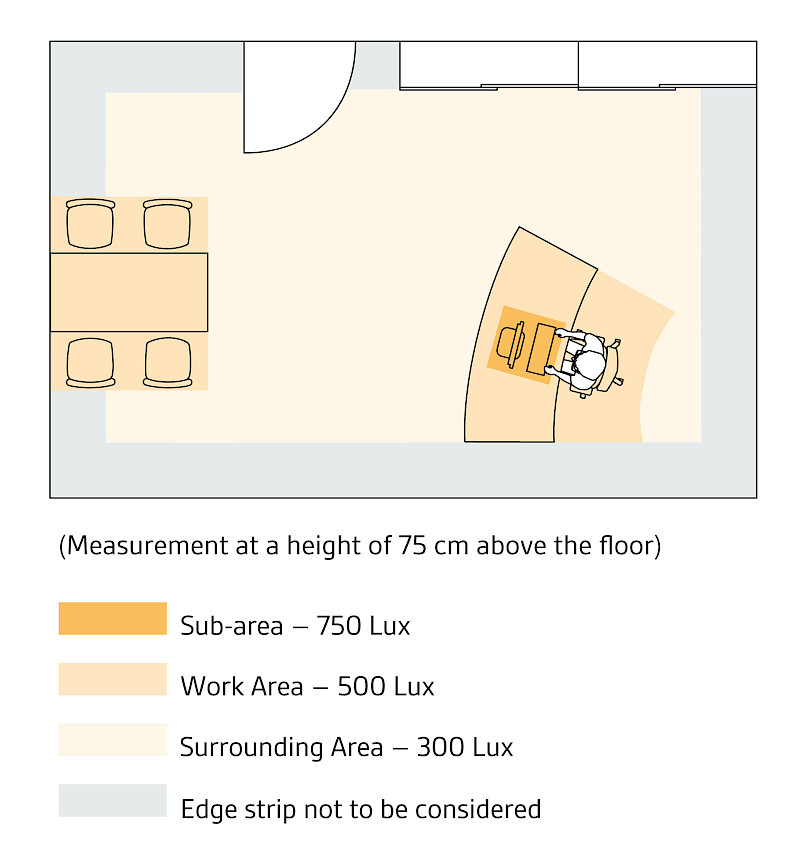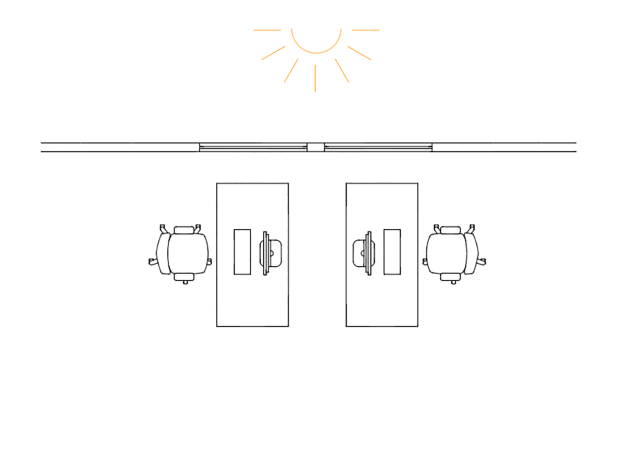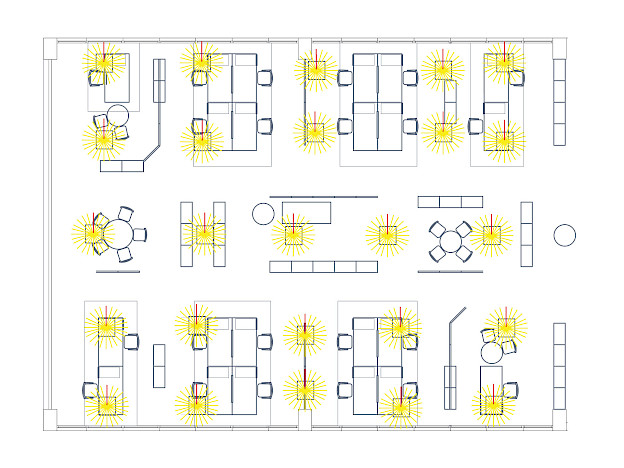High-quality lighting and the visual design of the working environment are essential for error-free, fatigue-free work. They have a significant impact on people’s well-being and willingness to perform.
On this page you will find a brief overview of the subject of light and lighting in the workplace. More detailed information can be found via the navigation in the right-hand column.
Light
Light and the ability to see are almost automatically mentioned together. Without light, nothing is visible.
The term light refers to the electromagnetic radiation of the sun that can be perceived by the human eye, within a wavelength range of 380 to 780 nanometres. Within this range, the spectrum is divided into the different colours from violet, blue, green, yellow to red. The sum of all wavelengths results in white.

Daylight illumination
The Technical Rule for Workplaces ASR A3.4 states unambiguously: “Workplaces must receive as much daylight as possible.” Exceptions are only permitted under certain conditions. It is recommended that workstations are placed as close to windows as possible.
What exactly is meant by sufficient daylight is explained in the chapter on daylight.

Lighting design
As part of lighting design, daylight is supplemented by artificial light sources. In order to create optimal working conditions, experts take into account a whole range of parameters. Perhaps the most important, and certainly the best known, is illuminance. This is measured in lux (lx). The following minimum requirements apply:
- Illumination in the immediate work area (task lighting): 750 lx
- Illumination across the entire workplace (workplace lighting): 500 lx
- Illumination in the near surroundings (ambient lighting): 300 lx
In addition, attention should be paid to the colour temperature. This is given in Kelvin (K) and determines the light colour. The following are distinguished:
- Warm white: below 3,300 K
- Neutral white: 3,300 – 5,300 K
- Daylight or cool white: above 5,300 K
Neutral and cool light makes reading easier, which is particularly beneficial for older people. Warmer light creates a more homely atmosphere.

A few rules
… you should bear in mind:
- Always position workplaces so that the line of sight runs parallel to the window front, and place artificial light sources to the side of screens.
- Provide glare protection measures to avoid both direct glare and reflected glare.
- Consider sun protection measures. These not only help against glare, but also against excessive heat build-up caused by solar radiation.
- Match the materials and colours of walls, floors and ceilings to the lighting conditions. Pay particular attention to ceiling areas above workplaces. In bright rooms, highly reflective ceilings can lead to reflected glare.
- Even if they look attractive: pure white or black desk surfaces are harmful to the eyes and have a negative effect on performance. It is better to choose slightly tinted, matt surfaces.



The effect of light
It is worthwhile paying attention to good office lighting – for the sake of employees’ health and performance. Scientific studies, for example, show that poor lighting hinders the intake of information, even when those affected consider the impairment irrelevant.
The adjacent graphic shows information loss with good and poor lighting.
The longer information is provided, i.e. the more information is presented, the greater the difference becomes.
Source: Bartenbach, C.; Witting, W. (2009). Handbook of Lighting Design. Fundamentals of Lighting Technology and Perceptual Psychology. Vienna: Springer, p. 58
REGULATIONS
- The basis of lighting design for office workplaces is ASR A3.4 Lighting and Visual Connections
- Download of the German document at www.baua.de
- A compilation of relevant standards can be found here >
USEFUL WEBSITES
- licht.de, Fördergemeinschaft Gutes Licht
The site offers comprehensive information for private individuals and professionals.
www.licht.de





